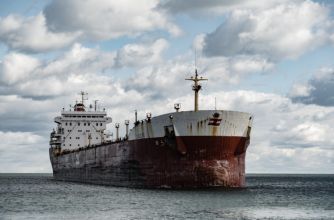 Fortunes have faded to a degree for the Capesize owners in the final days of October as the days get shorter and cargo demand gets a bit thinner on the ground. Certain brokers are predicting another surge of Atlantic demand in the coming days and there is reason to expect something similar in the Pacific, but for the moment the spot market is trending back toward charterer interests as avails start expanding. Brazil/UKC voyages are steady at US$ 12.3/mt.
Fortunes have faded to a degree for the Capesize owners in the final days of October as the days get shorter and cargo demand gets a bit thinner on the ground. Certain brokers are predicting another surge of Atlantic demand in the coming days and there is reason to expect something similar in the Pacific, but for the moment the spot market is trending back toward charterer interests as avails start expanding. Brazil/UKC voyages are steady at US$ 12.3/mt.
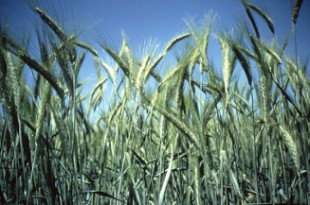 Expected yields for French soft wheat in the 2022/ 23 season have been lowered by French agency Agreste due to lower planting area. The agency lowered its forecast by 432,000mt this month to 33.69 Mt. High yields in the Hauts-de-France region have been offset by lower national crop area, down by 6% YoY.
Expected yields for French soft wheat in the 2022/ 23 season have been lowered by French agency Agreste due to lower planting area. The agency lowered its forecast by 432,000mt this month to 33.69 Mt. High yields in the Hauts-de-France region have been offset by lower national crop area, down by 6% YoY.
 Winning Shipping made several moves this month as part of an ongoing fleet renewal including buying the 10-year-old, 180,000 dwt “Frontier Triumph” while selling both a post-Panamax and 21-year-old Capesize for scrap. The purchase and demolitions bring the Singapore-based owner’s fleet to 39 ships. Hamish Norton, president of bulker operator Star Bulk, said his company has “no plans” to order any new bulk carriers as long as the implementation of new environmental regulations such as the IMO’s upcoming EEXI and CII indices remains uncertain. Such orders, says Norton, may end up being “stranded assets” by 2030 as the ESG landscape will likely be quite different in a decade from now. Nasdaq-listed bulker companies had a bearish week with nearly every stock down. Eagle Bulk [EGLE] fell 9% to US$40.4, Golden Ocean [GOGL] lost 16% to US$ 7.3 and Diana [DSX] slid 22% to US$ 3.6. For exclusive news and updates about dry bulk shipbroking, subscribe to the BMTI Daily Report.
Winning Shipping made several moves this month as part of an ongoing fleet renewal including buying the 10-year-old, 180,000 dwt “Frontier Triumph” while selling both a post-Panamax and 21-year-old Capesize for scrap. The purchase and demolitions bring the Singapore-based owner’s fleet to 39 ships. Hamish Norton, president of bulker operator Star Bulk, said his company has “no plans” to order any new bulk carriers as long as the implementation of new environmental regulations such as the IMO’s upcoming EEXI and CII indices remains uncertain. Such orders, says Norton, may end up being “stranded assets” by 2030 as the ESG landscape will likely be quite different in a decade from now. Nasdaq-listed bulker companies had a bearish week with nearly every stock down. Eagle Bulk [EGLE] fell 9% to US$40.4, Golden Ocean [GOGL] lost 16% to US$ 7.3 and Diana [DSX] slid 22% to US$ 3.6. For exclusive news and updates about dry bulk shipbroking, subscribe to the BMTI Daily Report.
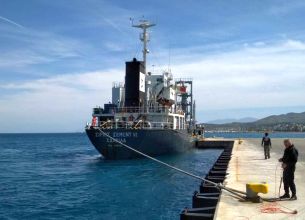 As they sometimes do, Capesize rates are splitting into hemispheres with Pacific rates under pressure (possibly ahead of next week’s Golden Week) and Atlantic rates largely buoyant. Western buoyancy is being led by front haul demand with consecutive daily upgrades of around US$ 1,000 lifting rates (ex-UKC) from the middle US$ 30,000s to the high US$ 30,000s in just a few short days. Some shipowners already claim to be seeing rate offers for US$ 40,000 daily on modern tonnage based on US Gulf delivery.
As they sometimes do, Capesize rates are splitting into hemispheres with Pacific rates under pressure (possibly ahead of next week’s Golden Week) and Atlantic rates largely buoyant. Western buoyancy is being led by front haul demand with consecutive daily upgrades of around US$ 1,000 lifting rates (ex-UKC) from the middle US$ 30,000s to the high US$ 30,000s in just a few short days. Some shipowners already claim to be seeing rate offers for US$ 40,000 daily on modern tonnage based on US Gulf delivery.
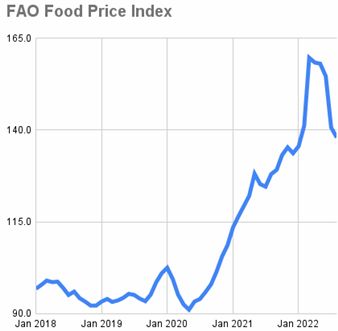 World food prices marginally declined for the fifth month in a row in August, based on the World Food Price Index created by the UN’s Food & Agriculture Organisation (FAO). Consumers have welcomed the easing in price inflation following the massive surge that happened immediately after the onset of war in Ukraine. Despite the decline, the UN hastened to add that food prices remain at historically high levels and that index values in the 140-160 range are still around 50% higher than the five-year-average when the index was consistently steady in the 90-100 range before the arrival of the Coronavirus pandemic in 2020. Average wheat prices, for example, are still some 10% higher than they were this time last year. The FAO also lowered its 2022 grain output forecast by 1.4%, citing heat waves in the EU among other global production limitations.
World food prices marginally declined for the fifth month in a row in August, based on the World Food Price Index created by the UN’s Food & Agriculture Organisation (FAO). Consumers have welcomed the easing in price inflation following the massive surge that happened immediately after the onset of war in Ukraine. Despite the decline, the UN hastened to add that food prices remain at historically high levels and that index values in the 140-160 range are still around 50% higher than the five-year-average when the index was consistently steady in the 90-100 range before the arrival of the Coronavirus pandemic in 2020. Average wheat prices, for example, are still some 10% higher than they were this time last year. The FAO also lowered its 2022 grain output forecast by 1.4%, citing heat waves in the EU among other global production limitations.
 Having fallen to their lowest level since February, Capesize rates were in the doldrums until the start of this week when a recovery in sentiment saw most levels starting to bounce back by midweek. The rally is most pronounced in the Pacific, where RV rates have swiftly climbed from the US$ 6,000s into the US$ 8-9,000s in just 48 hours. The reduction in congestion levels in the month of August has had a positive impact on returning charterers to the spot market, which shipowners hope will stay a virtuous cycle going into the end of the month. Brokers report that BHP has suddenly found themselves facing a challenge in finding or fixing any ships ETA Port Hedland as few owners have been willing to agree to index rates, a bullish indication to be sure.
Having fallen to their lowest level since February, Capesize rates were in the doldrums until the start of this week when a recovery in sentiment saw most levels starting to bounce back by midweek. The rally is most pronounced in the Pacific, where RV rates have swiftly climbed from the US$ 6,000s into the US$ 8-9,000s in just 48 hours. The reduction in congestion levels in the month of August has had a positive impact on returning charterers to the spot market, which shipowners hope will stay a virtuous cycle going into the end of the month. Brokers report that BHP has suddenly found themselves facing a challenge in finding or fixing any ships ETA Port Hedland as few owners have been willing to agree to index rates, a bullish indication to be sure.
 Navios Maritime Partners bought 36 bulk carriers from its parent company Navios Maritime Holdings for US$ 835m, bundled along with US$ 441.6m in debt from bank liabilities and leasing obligations.
Navios Maritime Partners bought 36 bulk carriers from its parent company Navios Maritime Holdings for US$ 835m, bundled along with US$ 441.6m in debt from bank liabilities and leasing obligations.
Dry bulk operator, Pacific Basin, says it generated a greatly improved profit in the first half of 2022 at US$ 465.1m. This was a considerable gain from the US$ 160.1m of profit it saw in H1-2021 and the company’s best profit so far. The Hong Kong-based company, controlling a fleet of 240 bulkers, says net daily TCE earnings for Handysizes and Supramaxes rose 83% and 85% year-on-year to US$ 26,370 and US$ 33,840 over the first six months of the year.
Bullish trends remained in place on Wall Street as bulker shares rose across the board. Diana Shipping [DSX] and Safe Bulkers [SB] increased 9.3% and 7.8% week-on-week to US$ 5.6 and US$ 3.9 per share.
For exclusive news and updates about dry bulk shipbroking, subscribe to the BMTI Daily Report.
 Average commodities prices have eased in recent weeks after peaking in June, according to the Bloomberg Commodity Spot Index, which tracks 23 futures for energy, metal and crop commodities. The index has fallen by 20% since hitting an all-time record level in June. Prices for agri-prods including wheat and other grain crops have started to ease under worries that a stagnating world economy will start to hurt demand going forward in 2022. With the ongoing restrictions stemming from the war in Ukraine and ever-present inflationary forces likely to remain in play this year, nonetheless, the momentary decline was called a relief, however temporary, for consumers and end users of raw materials.
Average commodities prices have eased in recent weeks after peaking in June, according to the Bloomberg Commodity Spot Index, which tracks 23 futures for energy, metal and crop commodities. The index has fallen by 20% since hitting an all-time record level in June. Prices for agri-prods including wheat and other grain crops have started to ease under worries that a stagnating world economy will start to hurt demand going forward in 2022. With the ongoing restrictions stemming from the war in Ukraine and ever-present inflationary forces likely to remain in play this year, nonetheless, the momentary decline was called a relief, however temporary, for consumers and end users of raw materials.
 The small-sized bulkers are emerging as champions among all size classes for bulk carriers with recent estimates by Allied showing that average S&P prices for Supramaxes and Handysizes have increased by 104% and 101%, respectively, since the beginning of 2021. Sales prices for Capes and Panamaxes rose by 74% and 64% over the same time period. Likewise, freight earnings for Supras and Handies since the start of 2022 have outperformed those of the larger Panamaxes and Capesizes.
The small-sized bulkers are emerging as champions among all size classes for bulk carriers with recent estimates by Allied showing that average S&P prices for Supramaxes and Handysizes have increased by 104% and 101%, respectively, since the beginning of 2021. Sales prices for Capes and Panamaxes rose by 74% and 64% over the same time period. Likewise, freight earnings for Supras and Handies since the start of 2022 have outperformed those of the larger Panamaxes and Capesizes.
NYSE-listed dry bulk operator Safe Bulkers [SB] has been selected by Seeking Alpha as a “top pick” for investors considering that it trades at a “significant discount” to its other dry bulk peers while also being considered the most discounted bulker pure-play by a wide margin.
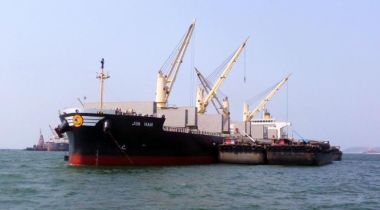 Off the Continent, the owners of a 38,000 dwt vessel have been testing charterers at a rate of US$ 29,000 daily for a trip via the Baltic Sea to the eastern Mediterranean, which ended up failing to attract charterers who were talking US$ 24,500. From the Black Sea area, loading in some Russian ports is now laden with an additional EWRI cost of around US$ 80,000 daily on top of the already much higher premium rates, owners are holding out for. Grain charterers continue quoting two cargoes from Romania to Tunisia, for which they aim at US$ 34-35/mt. A 30,000 dwt vessel is said to have been fixed at US$ 25,000 daily for a trip to the US Gulf.
Off the Continent, the owners of a 38,000 dwt vessel have been testing charterers at a rate of US$ 29,000 daily for a trip via the Baltic Sea to the eastern Mediterranean, which ended up failing to attract charterers who were talking US$ 24,500. From the Black Sea area, loading in some Russian ports is now laden with an additional EWRI cost of around US$ 80,000 daily on top of the already much higher premium rates, owners are holding out for. Grain charterers continue quoting two cargoes from Romania to Tunisia, for which they aim at US$ 34-35/mt. A 30,000 dwt vessel is said to have been fixed at US$ 25,000 daily for a trip to the US Gulf.
 Countering recent, if modest, declines in day-to-day spot rates, Capesize owners are relatively confident that May will represent a return in demand and rate growth. The past week for Capes was, in fact, largely positive with the BCI up by 16% week-on-week and prospects still widely positive for the biggest bulkers going deeper into the second quarter of the year. Inter-Pacific demand has been fairly lively in recent days as mineral demand returns to some degree. Pacific RVs are holding steady at about US$ 12/mt.
Countering recent, if modest, declines in day-to-day spot rates, Capesize owners are relatively confident that May will represent a return in demand and rate growth. The past week for Capes was, in fact, largely positive with the BCI up by 16% week-on-week and prospects still widely positive for the biggest bulkers going deeper into the second quarter of the year. Inter-Pacific demand has been fairly lively in recent days as mineral demand returns to some degree. Pacific RVs are holding steady at about US$ 12/mt.
 Shipping equities have performed surprisingly well in 2022 thus far, notes Clarksons in a recent market update, with average gains of 2-3% over the Easter holidays alone as well as 26% for all shipping sectors across the board year-to-date. Stock prices for tankers and bulkers have enjoyed a particularly sharp rise over the year so far with average gains of 41% YTD. The bulker and tanker operator Norden has recently initiated a new foray into second-generation biofuel burning derived from recycled cooking oil. Company head of Climate Solutions, Adam Nielson, says that Norden intends for at least 50 of its 500 vessels to be running on biofuel within the next five years. Shipping stocks have seen steady gains this year, as mentioned above, with some listed bulker shares up by more than 50% in the year thus far. Eagle Bulk [EGLE], for instance, is up by 55.7% since the year began to trade at US$ 55.3 per share. Golden Ocean [GOGL] has climbed 50.1% YTD to US$ 11.5. For exclusive news and updates about dry bulk shipbroking, subscribe to the BMTI Daily Report.
Shipping equities have performed surprisingly well in 2022 thus far, notes Clarksons in a recent market update, with average gains of 2-3% over the Easter holidays alone as well as 26% for all shipping sectors across the board year-to-date. Stock prices for tankers and bulkers have enjoyed a particularly sharp rise over the year so far with average gains of 41% YTD. The bulker and tanker operator Norden has recently initiated a new foray into second-generation biofuel burning derived from recycled cooking oil. Company head of Climate Solutions, Adam Nielson, says that Norden intends for at least 50 of its 500 vessels to be running on biofuel within the next five years. Shipping stocks have seen steady gains this year, as mentioned above, with some listed bulker shares up by more than 50% in the year thus far. Eagle Bulk [EGLE], for instance, is up by 55.7% since the year began to trade at US$ 55.3 per share. Golden Ocean [GOGL] has climbed 50.1% YTD to US$ 11.5. For exclusive news and updates about dry bulk shipbroking, subscribe to the BMTI Daily Report.
 After slowing with the onset of war in the last week of February, Russian wheat exports surged in March as the country moved to accelerate shipments to traditional buyers including Egypt, Turkey, Iran and Libya. Agricultural consultancy SovEcon said that Russian wheat shipments were leaving ports at a rapid pace in the second half of March with rerouting and payment considerations having been mostly resolved. Some of those shipments, market observers noted, went to countries that traditionally buy from Ukraine. Russia exported around 1.7 Mt of wheat in March, about 60% more than what was exported in March of 2021 (1.1 Mt), according to ProZerno, though for historical context last March also saw Russia’s grain exports fall to below average levels due to newly introduced export taxes.
After slowing with the onset of war in the last week of February, Russian wheat exports surged in March as the country moved to accelerate shipments to traditional buyers including Egypt, Turkey, Iran and Libya. Agricultural consultancy SovEcon said that Russian wheat shipments were leaving ports at a rapid pace in the second half of March with rerouting and payment considerations having been mostly resolved. Some of those shipments, market observers noted, went to countries that traditionally buy from Ukraine. Russia exported around 1.7 Mt of wheat in March, about 60% more than what was exported in March of 2021 (1.1 Mt), according to ProZerno, though for historical context last March also saw Russia’s grain exports fall to below average levels due to newly introduced export taxes.
 Very little has come to pass to slow the decline of Capesize freights as they continue to slide going into the final week of March and the first quarter of the year. Revived South American demand that has buoyed the Panamaxes so noticeably seems to have bypassed Capes for the moment as trans-Atlantic RV rates keep falling by more than US$ 1,000 day-on-day to hit the US$ 10-11,000 daily and quite likely enter the four-digit realm of the US$ 9,000s by midweek (brokers surmise). Front hauls are falling by a similar margin to trade in the high US$ 20,000s.
Very little has come to pass to slow the decline of Capesize freights as they continue to slide going into the final week of March and the first quarter of the year. Revived South American demand that has buoyed the Panamaxes so noticeably seems to have bypassed Capes for the moment as trans-Atlantic RV rates keep falling by more than US$ 1,000 day-on-day to hit the US$ 10-11,000 daily and quite likely enter the four-digit realm of the US$ 9,000s by midweek (brokers surmise). Front hauls are falling by a similar margin to trade in the high US$ 20,000s.
 Chilean-owned bulk carrier company Ultrabulk saw revenues double in 2021 compared to the year before, according to its newest financial report, with US$ 1.8 billion for last year’s total revenues (versus US$ 0.9 billion in 2020). After-tax results amounted to US$ 75m in 2021 compared to a deficit of US$ 16m in 2020. The Copenhagen-headquartered firm is one of the world’s largest bulker owners with a fleet of 179 vessels. Ultramax predicts its results for this year will land somewhere in the US$ 40-80m range thanks to ongoing “momentum” from last year and “strong operations” continuing into this year.
Chilean-owned bulk carrier company Ultrabulk saw revenues double in 2021 compared to the year before, according to its newest financial report, with US$ 1.8 billion for last year’s total revenues (versus US$ 0.9 billion in 2020). After-tax results amounted to US$ 75m in 2021 compared to a deficit of US$ 16m in 2020. The Copenhagen-headquartered firm is one of the world’s largest bulker owners with a fleet of 179 vessels. Ultramax predicts its results for this year will land somewhere in the US$ 40-80m range thanks to ongoing “momentum” from last year and “strong operations” continuing into this year.
 New supply contracts for potash secured in India and China have had ripple effects across the entire global potash market. The new import contracts, agreed at around US$ 590/mt CFR in both nations, represented a more than doubling of the previous contract agreements and essentially lifted the lower end of the price range for potash trading around the world. The lower limit for MOP netbacks (profit minus all supply costs) on Jordan-Israel trades, for instance, jumped by more than US$ 300/mt on the news to reach US$ 510-550/mt. Baltic Sea-based standard MOP netbacks rocketed to the range of US$ 520-560/mt (EUR 460-495/mt) FOB from a prior range of US$ 190-560/mt FOB. European potash demand itself, however, has remained static over the past week with granular spot prices stable with CIF prices (basis NW Europe) at EUR 570-600/mt.
New supply contracts for potash secured in India and China have had ripple effects across the entire global potash market. The new import contracts, agreed at around US$ 590/mt CFR in both nations, represented a more than doubling of the previous contract agreements and essentially lifted the lower end of the price range for potash trading around the world. The lower limit for MOP netbacks (profit minus all supply costs) on Jordan-Israel trades, for instance, jumped by more than US$ 300/mt on the news to reach US$ 510-550/mt. Baltic Sea-based standard MOP netbacks rocketed to the range of US$ 520-560/mt (EUR 460-495/mt) FOB from a prior range of US$ 190-560/mt FOB. European potash demand itself, however, has remained static over the past week with granular spot prices stable with CIF prices (basis NW Europe) at EUR 570-600/mt.
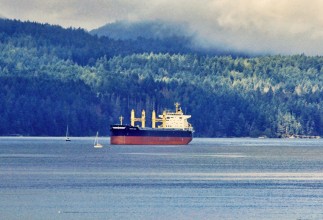 The chartering market is living up to earlier and repeatedly expressed expectations, i.e. staging a buoyant comeback by the end of February and/or early March, which proved to be conservative in hindsight—it happened, in fact, two weeks earlier. Alas, the Continent is lagging behind although owners feel encouraged to start quoting higher rates, which has less to do with the rise in the number of cargoes, than of a change in perception. The owners of a 34,000 dwt want US$ 15,000 daily for a trip to Brazil, which number they had not dared quoting last week. A 50,000 dwt vessel was rated by charterers at US$ 15,000 daily for a trip to the Med. The Black Sea also looks moderately better. Clinker charterers are facing stronger numbers with an Ultramax covered at US$ 23,000 daily from the eastern Mediterranean to West Africa.
The chartering market is living up to earlier and repeatedly expressed expectations, i.e. staging a buoyant comeback by the end of February and/or early March, which proved to be conservative in hindsight—it happened, in fact, two weeks earlier. Alas, the Continent is lagging behind although owners feel encouraged to start quoting higher rates, which has less to do with the rise in the number of cargoes, than of a change in perception. The owners of a 34,000 dwt want US$ 15,000 daily for a trip to Brazil, which number they had not dared quoting last week. A 50,000 dwt vessel was rated by charterers at US$ 15,000 daily for a trip to the Med. The Black Sea also looks moderately better. Clinker charterers are facing stronger numbers with an Ultramax covered at US$ 23,000 daily from the eastern Mediterranean to West Africa.
Unlike the Capesizes, which seem to have lost the majority of their 2021 gains in the final two months of the year, Panamax freights end the year still considerably higher than where they started it. The Panamax index closes the year at around 2,500 versus the sub-1,500 level at which it began 12 months prior. Indeed, it is still a notable decline from the over 4,000 level reached in October (the highest in several years), but it is nonetheless the sign of a strong fundamental market and one that is already recovering in the final weeks of the year thanks to renewed demand for Atlantic grain. Pacific redelivery demand for Atlantic grain was, in fact, what got the fire started for Panamaxes early in the year as the reduced import volumes from 2020 left a serious gap in food stocks across the eastern basin. Renewed import demand in the first half of the year saw China’s soybean imports jump by 16.8% YoY in the year through April.
 After showing signs of easing at the weekend, daily declines appear to have resumed and increased in intensity at midweek among the Capesize trades with Pacific RV rates taking a hefty loss of US$ 4-5,000 on average rates (taking the assessment to US$ 28,000 daily). This is quite the drop from the golden days of late Q3 as owners now struggle to keep freights anywhere close to last-done. TARV rates are also under increased pressure as US$ 3,000 day-on-day losses take the level to US$33,000 daily.
After showing signs of easing at the weekend, daily declines appear to have resumed and increased in intensity at midweek among the Capesize trades with Pacific RV rates taking a hefty loss of US$ 4-5,000 on average rates (taking the assessment to US$ 28,000 daily). This is quite the drop from the golden days of late Q3 as owners now struggle to keep freights anywhere close to last-done. TARV rates are also under increased pressure as US$ 3,000 day-on-day losses take the level to US$33,000 daily.
Next week (17 Nov), the European Commission is set to publish the first draft of the EU waste shipment regulations (WSR) review. The draft is widely expected to contain a ban, in some form, on scrap exports, both ferrous and non-ferrous. Observers expect the bans to be a total ban on exports to non-EU countries and/or a ban on exports to non-OECD countries that do not meet the EU’s current waste processing requirements. According to the most recent statistics (2019), the EU exported about 13% of its total scrap supply to non-EU buyers (or 14.5 Mt) of steel scrap. This volume, assuming a ban is implemented, would then be sold to buyers inside the EU instead. Should the ban, instead, be done on exports to non-OECD countries not complying with EU waste standards, this would affect about 3-4 Mt of scrap that currently goes to Egypt, India, Pakistan, China and a handful of other Asia-Pacific countries.
German bank Berenberg plans to expand its debt fund portfolio with two new multi-investor funds. The funds allow investments in ship mortgage loans starting at the “mid-single-digit million” amounts.
Wilson of Norway has joined forces with Rhenus Maritime Services of Germany to grow its market share in the European short sea market. Wilson plans to buy six cargo vessels and lease a few other vessels with Rhenus assisting in the acquisition. Scheduled to be completed by early 2022, the deal would bring the Wilson fleet to over 130 ships.
DNB shipping head, Christos Tsakonas, this week warned that lenders in the current upturn must learn from mistakes of the past and make sure that, “financing is based on cash flow, not just asset values.”
The chartering world remains a mixed bag of news, albeit one that continues to enrich the owners at any rate. Off the Continent, scrap charterers took a 56,000 dwt at US$ 35,000 daily to the East Med, which fixture is dwarfed by the fixture of a 35,000 dwt at US$ 36,500 to a similar destination WCSA charterers took a 58,000 dwt in the low US$ 40,000 daily for a trip via WCSA and redelivery Cristóbal. From the Black Sea, grain charterers are struggling to cover Handysize cargoes with tonnage tight and rates up. For Nikolayev to Tunisia there has been tonnage concluded at a rate of US$ 62/mt. Even for a 30,000mt grain cargo from less expensive Black Sea ports to the Egyptian Med, rates are somewhat in the US$ 50/mt range. Lau Lau managed to replace a vessel running late with a similar size vessel at US$ 60,500 daily for a trip to the East. Lucky them!
Following their slowing momentum at the end of last week with a renewed bout of energy at the start of this week, Capesize freights continue to surprise with the back haul assessment being the unlikely recipient of the biggest day-on-day improvement of any freight as the new week begins. Back haul trips seem to have jumped from the middle to high US$ 30,000s of more than US$ 39,000 over the weekend alone. Pacific round voyages, meanwhile, return to their old tricks with a US$ 2,000 day-on-day improvement taking them back to US$ 69-70,000.
European steelmakers say they are concerned that the European Commission may soon suspend duties on certain steel products in the same way that it has with proposed to do with Chinese flat-rolled aluminium. The commission recently released a proposal to suspend duties on Chinese aluminium for a limited nine-month period. China has returned to being a net importer of aluminium products (instead of a world-leading exporter) due to the impact of environmental regulations on the production of the metal. European steel mills say they now are concerned that similar measures will be made for steel products, which would allow increased imports of Chinese steel products, particularly those that have been in relatively short supply across the European Union in recent months. As domestic European demand for steel resurged this year, steel prices have simultaneously climbed to multi-year highs. A part of the commission’s logic for reducing duties is to ease the shortage of steel products across the EU, making manufacturing and construction operations easier for European industry at large.
Golden Ocean has announced its next steps in fleet renewal with an order for three 85,000 dwt Kamsarmaxes to be built at a Chinese yard and delivered between Q3-2023 and Q1-2024. The vessels are said to be equipped to sail with two different fuel types, thus improving flexibility and fuel efficiency as well as curbing emissions compared to traditional ships.
A typical Monday is marked by a lack of momentum, where dithering prevails. Attempts to cover ECSA stems by taking tonnage in the East are still happening with tonnage now being taken at US$ 33,500 daily. For October, Black Sea grain charterers are facing numbers of US$ 37,000 daily basis Singapore delivery. Rates off the Continent for Supramaxes have dropped to around US$ 34,000 daily for a trip to the Med with scrap and low US$ 30,000s daily for trips to ECSA. Handysizes are said to be about the same. Handysizes appear to be owners’ cash cows anyway.
Euro wheat crop predictions continue to be downgraded amid changing weather patterns. Wheat produced in France, Europe’s biggest producer, is now expected to decline to 34.93Mt in the 2021-22 marketing year, according to Agritel, which lowered its prior forecast by some 3 Mt. The agricultural consultant says that persistent and unfavourably wet weather in late summer has threatened to curb output for the current marketing year. While this would still exceed the previous year’s output of 29.2 Mt, it lies under the ten-year average for French wheat.
With rates breaking new records, it stands to reason that congestion levels would be at records as well. Indeed, some 16% of the world’s bulk carrier fleet is currently being held up by port queues, according to estimates by Braemar. The broker says bulker queues hit a record 142m dwt at the weekend with China accounting for about a third (52.7m dwt or 6% of the bulker fleet). These levels are 28% higher than a month ago and 23% higher than a year ago. Capesize freights keep climbing, albeit at a slower pace of circa US$ 1,000 day-on-day with TARVs finally hitting US$ 50,000 daily, as expected. Front haul rates are rising by leaps and bounds with high US$ 70,000s of up to US$ 77-78,000 daily expected by midweek.
Atlantic Panamax tonnage is said to be especially hard to come by at the moment, according to several brokers working on the trans-Atlantic trades, with low US$ 30,000s (on TARV rates) moving to the middle-high US$ 30,000s in a few days. Front hauls passed US$ 50,000 on 82,000 dwt ships for the first time in ages while the same rates are only about US$ 500 away for the standard 74-78,000 dwt vessels as well. Indonesia rounds have climbed to US$ 33,000.
Long-time stock market-lister Eagle Bulk Shipping [EGLE] is reporting a record profit for the second quarter of the year with any EBITDA of US$ 62.7m in Q2-2021, dwarfing the US$ 9.7m secured in the same quarter of 2020. According to Eagle’s newly published earnings report, total revenue rose to US$ 129.8m in the quarter—up from US$ 57.3m a year before—with profit of US$ 9.2m for Q2 vs. a loss of US$ 20.4m in Q2-2020. The bulker company says that it has already fixed 75% of its open ship days for Q3-2021 at TCE rates in excess of US$ 28,000 daily. CEO Gary Vogel said Eagle maintains an “optimistic outlook” for market developments in the rest of the year.
On a typical Monday when all players are positioning their “guns” for the battle ahead of the week, news has been limited. Off the Continent, Handysize owners appear relaxed with an excellent choice of cargo proposals that should lead to higher than last-done numbers. The owners of a 34,000 dwt have been seeing US$ 31,000 daily for a 15-20 day local employment. The rates proposed in general for several Atlantic destinations have been hovering at US$ 30,000 daily anyway. A 56,000 dwt was fixed for a 15-day RV at US$ 34,000 daily. Supramax rates to South Africa are hovering in the low US$ 40,000s. From the Black Sea, a Supramax was rumoured fixed at US$ 48,000 daily for a trip via East Africa and redelivery Durban. This is about US$ 8,000 daily better than done early last week. Clinker charterers have taken a 63,000 dwt ship from the Black Sea to West Africa at US$ 48,000 daily. But a rate of US$ 47,000 daily on a 57,000 dwt vessel with clinker to similar destination is not bad either, is it? Fertilizer charterers last week took a 38,000 dwt for a cargo from Black Sea to Brazil at the equivalent of US$ 36,000 daily.

